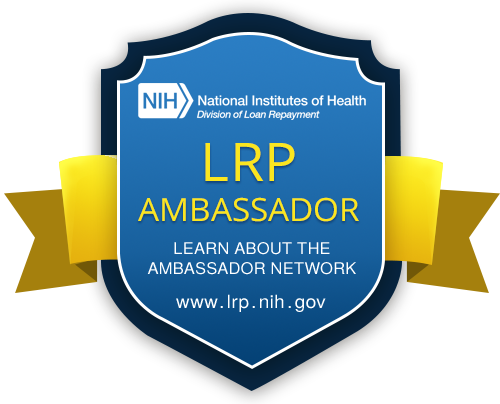Supporting Scientific Discovery
The NIH Loan Repayment Programs (LRPs) are a set of programs established by Congress and designed to recruit and retain highly qualified health professionals into biomedical or biobehavioral research careers. The escalating costs of advanced education and training in medicine and clinical specialties are forcing some scientists to abandon their research careers for higher-paying private industry or private practice careers.
The LRPs counteract that financial pressure by repaying up to $35,000 annually of a researcher's qualified educational debt in return for a commitment to engage in NIH mission-relevant research. Since tomorrow's medical breakthroughs will be made by investigators starting in their research careers today, the LRPs represent an important investment by NIH in the future of health discovery and the wellbeing of the Nation.
Application Periods and Documentation Deadlines
Extramural New & Renewal Awards
Online Application Period
![]() Sep 1, 2017 - Nov 15, 2017
Sep 1, 2017 - Nov 15, 2017
Supporting Documentation Period
![]() Sep 1, 2017 - Nov 15, 2017
Sep 1, 2017 - Nov 15, 2017
Intramural New Awards
Online Application Period
![]() Sep 1, 2017 - Apr 3, 2018
Sep 1, 2017 - Apr 3, 2018
Supporting Documentation Period
![]() Sep 1, 2017 - Apr 17, 2018
Sep 1, 2017 - Apr 17, 2018
Intramural ACGME New Awards
Online Application Period
![]() Sep 1, 2017 - Jun 15, 2018
Sep 1, 2017 - Jun 15, 2018
Supporting Documentation Period
![]() Sep 1, 2017 - Jun 29, 2018
Sep 1, 2017 - Jun 29, 2018
Intramural Renewal Awards
Online Application Period
![]() Sep 1, 2017 - Feb 8, 2018
Sep 1, 2017 - Feb 8, 2018
Supporting Documentation Period
![]() Sep 1, 2017 - Feb 22, 2018
Sep 1, 2017 - Feb 22, 2018
Contact & Engage
Upcoming Conferences
AAMC Health Professions Financial Aid Administrators
Portland, OR
February 7-9, 2018
Twitter Feed
Engage
After losing one child to Neimann-Pick Disease Type C, the Marella family is hopeful that new experimental treatments at the NIH will allow their son Andrew, and several other children with the same disease, to have a better quaity of life. https://www.youtube.com/watch?v=-LGefTTpYQ0&feature=youtu.be
Thomas Reese (NIH/MBL): Visualizing Synaptic Signaling
How neurons work on a molecular level is the research focus of Dr. Thomas Reese’s NINDS Section on Structural Cell Biology. He talks about his four decades of neuroscience research at http://bit.ly/1t8Ep4t









